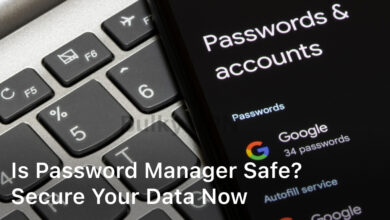
Power security is a critical aspect of any infrastructure, and safeguarding it is essential for uninterrupted service. With expert guidance, you can enhance power security and minimize the associated risks. In this article, we’ll provide valuable tips from industry experts to help you safeguard your infrastructure effectively.
Whether you’re an energy provider, a business owner, or a homeowner, power security is a top priority. From assessing vulnerabilities to implementing robust security measures, industry best practices can help you achieve power infrastructure resilience. Join us as we explore the various aspects of power security and offer expert recommendations to help you mitigate risks.
Read on to discover how you can enhance power security with expert tips and safeguard your infrastructure against potential threats.
Understanding Power Security

Power security is essential for safeguarding critical infrastructure against potential threats. A reliable energy supply is vital for ensuring continued operations in various industries, including healthcare, finance, and transportation. Power infrastructure protection is crucial to keep the nation’s economy and security intact.
However, achieving power security can be challenging, given the threats and risks that face power infrastructure. Natural disasters, cyberattacks, and physical intrusion are among the various factors that can lead to grid failure, putting numerous sectors at risk.
In this section, we will delve deeper into what power security entails and provide an overview of the challenges associated with it. We will discuss the significance of a reliable energy supply and the need to protect critical infrastructure, such as power plants and transmission lines, from various threats.
Readers will gain a better understanding of power security and its importance in modern society.
Assessing Vulnerabilities
Power infrastructure can be vulnerable to a range of threats, including cyberattacks, physical damage, and natural disasters. Conducting a comprehensive risk analysis is vital in identifying potential weak points in your infrastructure before an attack or outage occurs.
Risk analysis involves assessing the likelihood and impact of potential threats and vulnerabilities. This process provides valuable information to guide decision-making, such as where to allocate resources for security measures. Expert advice on vulnerability assessment can help identify critical assets and develop a plan to protect them.
It’s important to conduct regular vulnerability assessments, as threats and infrastructure conditions can change over time. These assessments should include both internal and external factors, such as equipment, personnel, and location. A proactive approach to assessing vulnerabilities can prevent costly security breaches and power outages.
Implementing Robust Security Measures
Protecting power grids and infrastructure from cyber threats and physical attacks is crucial to ensure uninterrupted energy supply. Implementing robust security measures is necessary to safeguard your critical infrastructure, prevent power outages, and mitigate the risk of cyberattacks.
Cybersecurity Measures
- Secure your networks to prevent unauthorized access to your systems and data.
- Use firewalls to block unauthorized traffic.
- Encrypt your data to prevent theft or manipulation.
- Conduct regular security assessments to identify and fix potential vulnerabilities.
- Educate your employees on cybersecurity best practices.
Physical Security Measures
- Control physical access to power infrastructure areas.
- Install CCTV cameras to monitor the infrastructure 24/7.
- Use biometric access control systems to prevent unauthorized access.
- Implement intrusion detection systems to detect and respond to potential threats.
Emergency Response Protocols
- Develop emergency response plans to minimize downtime in case of an incident.
- Conduct regular drills to ensure all stakeholders are aware of their roles and responsibilities in case of an emergency.
- Invest in backup power systems to ensure uninterrupted energy supply.
By implementing a combination of cybersecurity, physical security, and emergency response protocols, you can enhance power security and protect your infrastructure from potential threats.
Mitigating Risk with Expert Strategies
Power outages can cause significant disruption and financial losses for businesses. However, there are expert strategies that can mitigate the risks associated with power security.
Backup Systems
Implementing backup systems is an effective way to reduce the impact of power outages. A backup generator can provide emergency power, keeping critical systems operational. It is essential to test backup systems regularly to ensure they are functioning correctly in the event of an outage.
Redundant Infrastructure
Redundant infrastructure can also help minimize the impact of power outages. Duplicating critical components of power infrastructure, such as power lines and transformers, ensures that there is no single point of failure. This approach also enables maintenance and repairs to be conducted without affecting power supply.
Disaster Preparedness
Effective disaster preparedness involves identifying potential risks and taking steps to mitigate them. Developing a comprehensive emergency response plan that addresses various scenarios can help minimize the impact of power outages. Regular drills can ensure that all staff members are trained and prepared to respond effectively in the event of an emergency.
By implementing expert strategies, businesses can minimize the impact of power outages and mitigate associated risks.
Industry Best Practices
Power infrastructure resilience is a critical component of ensuring power security. Adopting industry best practices can help organizations achieve higher levels of resilience and better protect their infrastructure.
One of the most important best practices is to conduct regular risk assessments to identify vulnerabilities. By analyzing potential threats and implementing necessary security measures, organizations can improve infrastructure resilience and reduce the likelihood of power outages.
Another critical aspect of power infrastructure resilience is the establishment of redundant power sources and backup systems. Organizations should have the ability to maintain power availability even in the event of a failure or disruption in the primary power source.
Furthermore, cybersecurity measures are vital to protect power infrastructure from cyber-attacks. It is essential to implement security protocols that monitor and detect potential threats to the infrastructure.
Successful case studies show that the implementation of these best practices has helped organizations improve their resilience and minimize power outages. By following industry best practices, organizations can better safeguard their infrastructure and ensure that their critical operations remain uninterrupted.
Expert Recommendations
Experts recommend that organizations design their power infrastructure with resilience in mind. This includes establishing backup power systems, conducting regular vulnerability assessments, and developing effective disaster recovery plans.
Organizations should also consider the use of smart grid technologies that can help improve the resilience of power infrastructure. These technologies can help detect and mitigate potential threats, improve energy efficiency, and reduce the likelihood of outages.
By following the expert recommendations and best practices, organizations can develop better resilience to power outages and improve their overall power security.
Conclusion
In conclusion, power security is critical for safeguarding infrastructure and maintaining a reliable energy supply. Expert tips and guidance can enhance power security by identifying vulnerabilities, implementing robust security measures, and mitigating risks.
As discussed throughout this article, conducting comprehensive risk analyses, implementing cybersecurity measures, and preparing for power outages are all essential for achieving power infrastructure resilience. Taking industry best practices into account can provide valuable insights and examples of successful power security strategies.
We encourage readers to apply the tips and strategies discussed in this article to protect their infrastructure effectively. By prioritizing power security and seeking expert guidance, individuals and organizations can ensure a more dependable and secure energy supply.
FAQ
How can expert guidance enhance power security?
Expert guidance plays a crucial role in enhancing power security by providing valuable insights, strategies, and recommendations to safeguard your infrastructure effectively. Industry experts have the knowledge and experience to assess vulnerabilities, implement robust security measures, and mitigate risks associated with power outages. Their expertise can help you make informed decisions and establish best practices for power security.
What is power security?
Power security refers to the measures and precautions taken to ensure the reliable and uninterrupted supply of energy and protect critical infrastructure against potential threats. It encompasses strategies to safeguard power grids, prevent disruptions, and mitigate risks such as cyber attacks, physical damage, and natural disasters. Power security is essential for maintaining the stability and resilience of energy systems.
Why is assessing vulnerabilities important for power security?
Assessing vulnerabilities is crucial for power security as it helps identify potential weak points and risks within the power infrastructure. By conducting thorough risk analysis, experts can evaluate the likelihood and potential impact of various threats, such as cyber threats or physical attacks. This assessment allows for the development of targeted security strategies and the implementation of effective mitigation measures for enhanced power security.
What are some robust security measures that can be implemented for power security?
To enhance power security, robust security measures can be implemented, including cybersecurity protocols, physical security enhancements, and emergency response plans. Cybersecurity measures involve implementing firewalls, intrusion detection systems, and regular security audits to protect against cyber threats. Physical security measures may include surveillance systems, access controls, and perimeter protection. Emergency response plans ensure swift and effective action in the event of power disruptions or emergencies.
How can power infrastructure vulnerabilities be mitigated with expert strategies?
Expert strategies can aid in mitigating power infrastructure vulnerabilities and minimizing the impact of power outages. These may include implementing backup systems such as generators or uninterruptible power supplies (UPS), ensuring redundant infrastructure to avoid single points of failure, and developing comprehensive disaster preparedness plans. Drawing from the experience of industry experts, organizations can adopt proactive measures to enhance the resilience of their power infrastructure.
What are some industry best practices for power security?
Industry best practices for power security involve a combination of technical and operational measures. These practices may include regularly updating and patching software and hardware systems to mitigate vulnerabilities, conducting regular training and awareness programs for employees regarding cybersecurity and physical security practices, and establishing partnerships with local emergency response agencies. Additionally, organizations should actively engage with industry associations and participate in collaborative initiatives to stay updated on the latest trends and technologies in power security.





